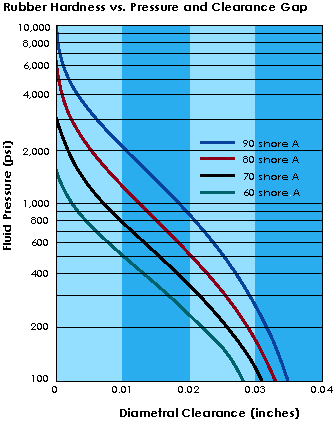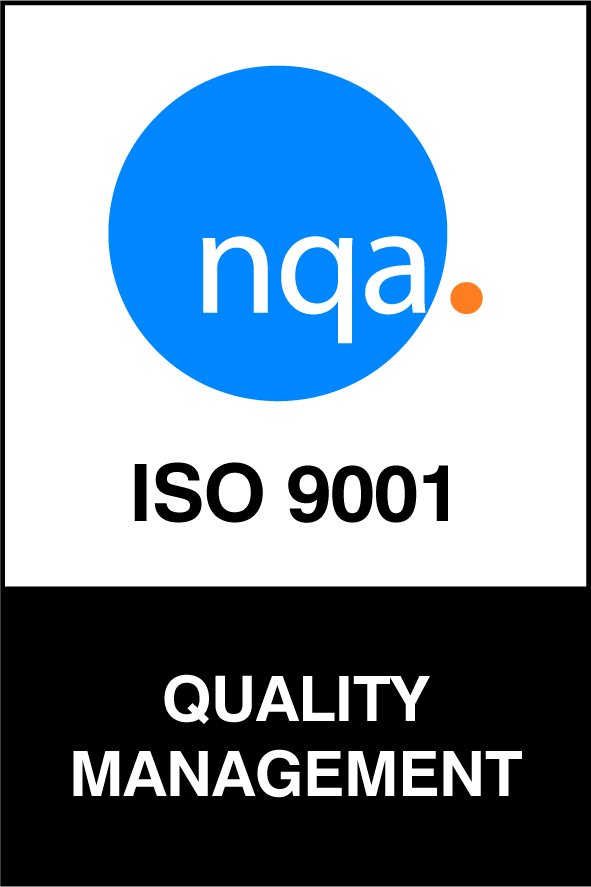O-Ring Durometer vs Pressure and Clearance Gap Groove Design Reference
High Pressure/Extrusion Most elastomeric seals are designed to operate within ambient pressure to about 1,500 psi. At very high pressures, the seal must have sufficient strength to resist extrusion into the clearance gap. The chart at right illustrates the recommended limits of the combination of clearance gap (diametral), seal hardness, and pressure differential. Techniques to avoid extrusion in high-pressure applications include decreasing the clearance gap, increasing the elastomer modulus (Mod 100) and the use of backup rings. Backup rings can be made of many rigid polymeric materials and are used on the low-pressure side within the gland to help prevent extrusion. Standard size backup rings are available in many materials. Changes in Pressure/Vacuum Cycling pressure can cause the seal to move back and forth within the gland. This can be especially damaging to seals with poor dynamic properties or in applications with low compression, which will allow for more motion. |
|

